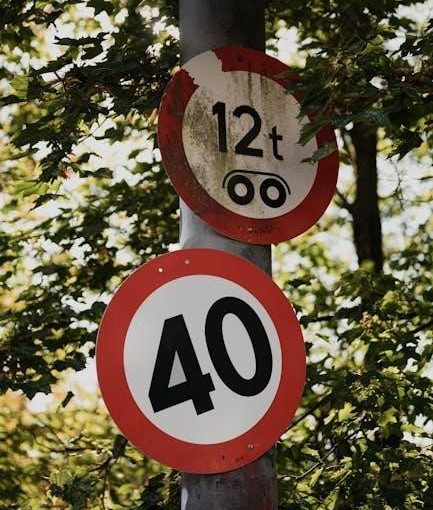The official FIBA Basketball Rules and Regulations PDF outlines the fundamental guidelines for the sport, covering team composition, scoring systems, game timing, and equipment standards․ Understanding these rules ensures fair play and enhances the enjoyment of basketball for players and spectators worldwide․
Overview of Basketball as a Sport
Basketball is a dynamic team sport played between two teams of five players each on a rectangular court with a hoop at each end․ The objective is to score by shooting the ball into the opponent’s basket while defending against the opposing team․ It is a fast-paced game that combines skill, strategy, and physical fitness․ Basketball is enjoyed globally, with professional leagues like the NBA and international competitions governed by FIBA rules․ Understanding the sport’s rules and regulations is essential for players, coaches, and fans to appreciate its complexity and ensure fair play․ Basketball’s popularity stems from its universal appeal and exciting nature․
Importance of Understanding the Rules
Understanding basketball rules is crucial for ensuring fair play, promoting player safety, and enhancing the overall enjoyment of the game․ Rules govern player behavior, team strategies, and game flow, providing a structured framework for competition․ They help referees enforce consistency and maintain order during matches․ For players, knowing the rules enables better decision-making and skill development․ Spectators also benefit by following the game more effectively․ Adhering to regulations fosters sportsmanship and respect among participants․ Whether in professional leagues like the NBA or international FIBA competitions, understanding the rules is essential for everyone involved in basketball․ It ensures a balanced and enjoyable experience for all․
Where to Find Official Basketball Rulebooks (FIBA, NBA)
The official basketball rulebooks for FIBA and NBA can be easily accessed online․ FIBA publishes its Official Basketball Rules annually, available as a PDF on their official website under the “Resources” section․ The NBA also provides its rulebook on its official site, detailing specific league regulations․ Both documents cover essential aspects such as team composition, scoring systems, fouls, and game timing․ They are indispensable for players, coaches, and officials to stay updated on the latest guidelines․ These resources ensure consistency and clarity in understanding the rules, whether for international or professional play․

Game Structure and Key Rules
Basketball games are structured around FIBA rules, featuring timed quarters, a shot clock, and clear guidelines on team composition, substitutions, and scoring systems․
Team Composition: Number of Players and Substitutions
A basketball team consists of five players on the court at a time, with sixteen players allowed on the roster․ Substitutions can occur during stoppages in play, such as timeouts or fouls, and are managed by the coaching staff․ According to FIBA rules, substitutions must be requested through the scorer’s table and are limited in number․ Players can re-enter the game, but teams must adhere to substitution limits to maintain fair play․ Coaches play a crucial role in strategizing substitutions to optimize performance and player rest․ Understanding these regulations ensures smooth gameplay and compliance with official basketball standards․
Scoring System: Points and Types of Shots
Basketball scoring involves earning points through field goals and free throws․ A field goal is worth two points if made inside the three-point line and three points if made from behind it․ Free throws, awarded for fouls, are worth one point each․ Teams accumulate points by successfully scoring baskets or converting free throws․ The team with the highest score at the end of four quarters wins the game․ Accurate scoring is essential, and referees ensure points are recorded correctly․ Understanding the scoring system is fundamental to grasping basketball’s competitive nature and strategic gameplay․
Game Timing: Quarters, Halves, and Shot Clock
Basketball games are divided into four quarters, each lasting 12 minutes in professional play (NBA) and 10 minutes in international (FIBA) games․ College and high school games are split into two halves, with varying durations․ The shot clock, introduced to maintain game flow, requires teams to attempt a shot within 24 seconds in the NBA and 24 seconds in FIBA․ Time management is critical, as violations result in possession changes․ Overtime periods, if needed, are 5 minutes in professional leagues․ Accurate timing ensures fairness and pace, making it a cornerstone of basketball’s structure and strategy․
Ball in Play: Live Ball and Dead Ball Situations
A live ball is in play when it is within the bounds of the court and the game is actively progressing․ Play begins with a jump ball or inbound pass, and the ball remains live until a dead ball situation occurs․ A dead ball happens when play is stopped due to fouls, violations, or the ball going out of bounds․ Referees signal a dead ball by blowing their whistle, and the game resumes with a throw-in, free throw, or jump ball․ Understanding these transitions is crucial for maintaining game flow and ensuring fair play according to basketball rules and regulations․
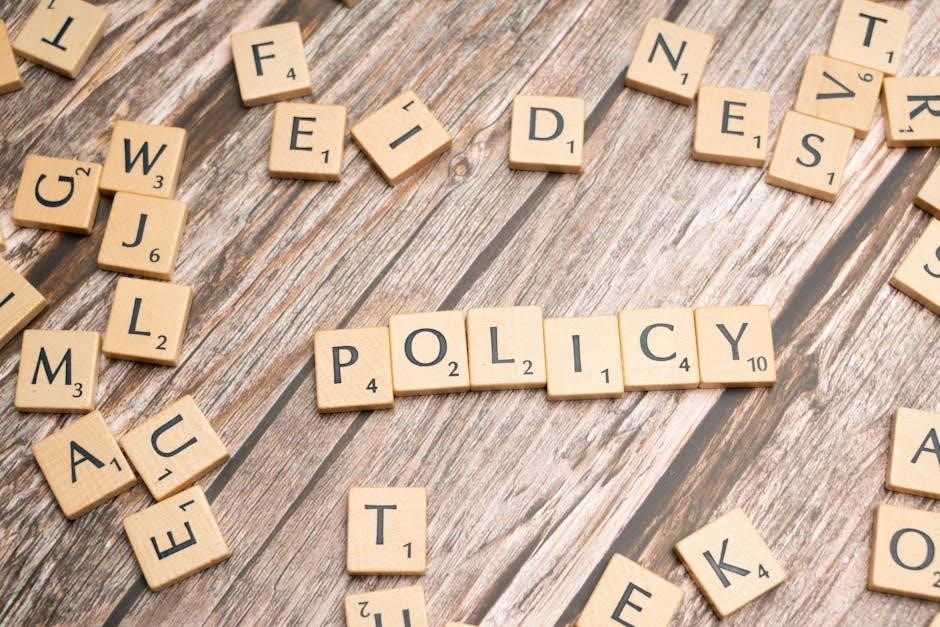
Equipment and Court Regulations
The official basketball rules specify that games must be played with a FIBA-approved ball, hoops, and backboards․ Courts must meet standardized dimensions, ensuring safety and fair play for all participants․
Approved Basketball Equipment: Ball, Hoops, and Backboards
Official basketball equipment must meet FIBA and NBA standards․ The ball size varies for men and women, with precise circumference and weight requirements․ Hoops are 3․05 meters high, with an 18-inch rim diameter; Backboards are made of shatterproof materials, measuring 3․5×1․8 meters in FIBA and slightly larger in NBA․ All equipment must pass safety tests to ensure fair play and player protection․ Properly approved gear is essential for maintaining the integrity and consistency of the game across all levels of competition․
Dimensions of the Basketball Court
A standard basketball court measures 28 meters in length and 15 meters in width for FIBA-regulated games, while NBA courts are slightly larger at 29․26 meters long and 16․76 meters wide․ The court features a rectangular shape with a center circle, free-throw lines, and three-point arcs․ The free-throw line is 4․57 meters from the hoop in FIBA and 4․60 meters in NBA․ The three-point line varies, with FIBA at 6․75 meters and NBA at 7․24 meters․ These precise dimensions ensure consistent gameplay and fair competition across all levels, adhering to the official rules and regulations of basketball․
Player Attire and Safety Guidelines
Players must wear approved basketball attire, including jerseys, shorts, socks, and athletic shoes․ Jerseys must display visible numbers and names, adhering to FIBA or NBA regulations․ Socks must cover the calves, and shoes must provide proper ankle support․ Jewelry, headwear, and hard objects are prohibited for safety reasons․ Mouthguards are optional but recommended, especially for players with braces․ The attire must be non-discriminatory and meet the standards outlined in the official rules and regulations of basketball PDF․ Officials ensure all players comply with these guidelines before and during the game to maintain safety and uniformity․

Fouls and Violations
Fouls are unauthorized physical contacts or rule violations․ Personal fouls involve illegal contact, while technical fouls penalize unsportsmanlike behavior․ Flagrant fouls are severe and may lead to ejection․
Types of Fouls: Personal, Technical, and Flagrant
In basketball, fouls are categorized into personal, technical, and flagrant types․ Personal fouls involve illegal physical contact, such as holding or pushing an opponent․ Technical fouls are assessed for unsportsmanlike behavior, including arguing with officials or excessive protests․ Flagrant fouls are severe and involve unnecessary or excessive contact, often resulting in injury or potential harm․ Flagrant fouls are divided into two levels, with the more severe leading to ejection․ Understanding these distinctions is crucial for players and officials to maintain fair play and safety during the game, as each type carries specific penalties and consequences outlined in the official basketball rulebooks․
Common Violations: Traveling, Double Dribble, Carrying
Common basketball violations include traveling, double dribble, and carrying․ Traveling occurs when a player takes more than two steps without dribbling the ball․ A double dribble happens when a player dribbles, stops, and then dribbles again without losing possession․ Carrying involves holding the ball for more than five seconds or moving it illegally․ These violations result in a turnover, giving the opposing team possession․ Understanding these rules is essential for players to avoid penalties and maintain legal play․ Officials strictly enforce these violations to ensure the game flows smoothly and fairly, as outlined in the official basketball rulebooks and guidelines․ Proper knowledge helps players avoid such mistakes during gameplay․
Consequences of Fouls: Free Throws and Possession
When a foul is committed, it often results in penalties such as free throws or possession of the ball for the opposing team․ Personal fouls, such as holding or pushing, can lead to free throws if the foul occurs during a shot․ If a player commits five fouls, they are disqualified from the game․ Unsportsmanlike fouls, like flagrant contact, may award free throws and possession․ Shooting fouls grant the offended player one or two free throws, depending on the situation․ In severe cases, such as flagrant fouls, the opposing team may receive multiple free throws and possession․ These consequences ensure fair play and penalize unsportsmanlike behavior, as outlined in official basketball rules․ Proper enforcement maintains game integrity․
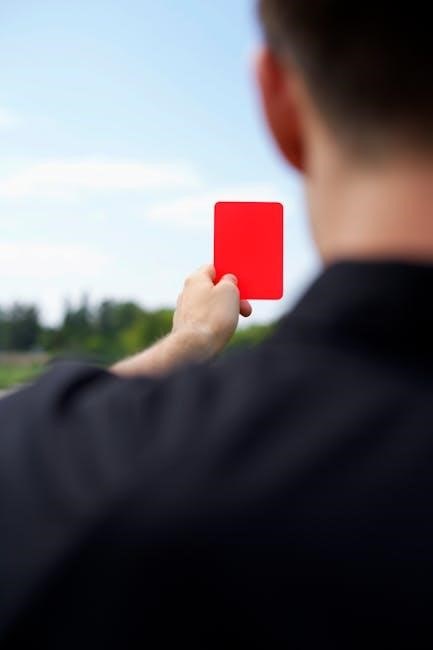
Differences Between FIBA and NBA Rules
FIBA rules differ from NBA regulations in shot clock timing, foul limits, and ball interference․ FIBA uses a 30-second shot clock and allows five fouls per player, while the NBA uses a 24-second shot clock and six fouls per player․ Additionally, FIBA permits ball interference after the ball hits the rim, which is prohibited in the NBA․ These variations impact gameplay strategies and player conduct across international and professional leagues․
Game Length: FIBA vs․ NBA
FIBA basketball games are divided into four 10-minute quarters, resulting in a total game length of 40 minutes․ NBA games, however, consist of four 12-minute quarters, totaling 48 minutes․ This difference significantly impacts the pace and strategy of the game․ FIBA’s shorter quarters emphasize faster ball movement and reduced downtime, while the NBA’s longer format allows for more detailed play execution and player substitutions․ These distinctions influence both player endurance and spectator experience, making each league’s style unique․ The variations in game length are a key factor in adapting strategies for international and professional competitions․
Shot Clock Differences
The shot clock is a critical component in basketball, with notable differences between FIBA and NBA rules․ In FIBA, the shot clock is set to 24 seconds, while the NBA also uses a 24-second shot clock․ However, FIBA resets the shot clock to 14 seconds after an offensive rebound, whereas the NBA keeps the full 24 seconds; This difference impacts offensive strategies, particularly in late-game situations․
FIBA’s shorter reset time encourages faster decision-making and reduces stagnation, while the NBA’s longer clock allows for more elaborate plays․ Both systems aim to maintain game flow but reflect distinct philosophies in pacing and scoring․ These variations are detailed in the official rulebooks to ensure clarity for players and officials․
Foul Limits and Playoff Rules
FIBA and NBA rules differ in foul limits and playoff regulations․ In FIBA, players are allowed five fouls before being disqualified, while the NBA permits six fouls․ Playoff rules also vary, with FIBA implementing a “foul-out” system that strictly enforces disqualification after five fouls․ The NBA, however, allows players to remain in the game with six fouls but imposes stricter penalties in critical situations․ These differences significantly impact gameplay and strategic decisions, especially in high-stakes playoff scenarios․ Official rulebooks, such as the FIBA Basketball Rules and Regulations PDF, provide detailed guidelines to ensure consistency and fairness in all competitions․
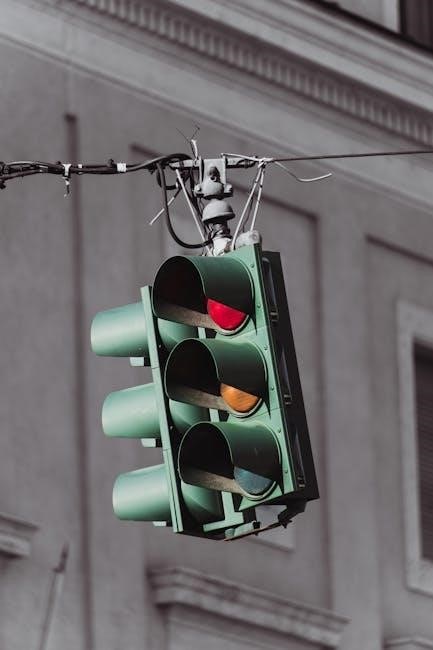
Officials and Their Roles
Referees enforce rules, monitor gameplay, and maintain order․ Scorekeepers track points, fouls, and timeouts․ Timekeepers manage game clocks․ Together, they ensure fair play and accurate record-keeping in basketball․
Referees: Duties and Signals
Referees are responsible for enforcing basketball rules, ensuring fair play, and maintaining game order․ They use specific signals to communicate decisions, such as holding arms up for a jump ball or waving arms for fouls․ Hand gestures and whistles are key tools for referees to convey rulings clearly․ Their roles include monitoring player conduct, tracking timeouts, and managing game flow․ Referees must stay impartial, making split-second decisions to uphold the game’s integrity․ Their signals and calls are standardized, as outlined in the FIBA Basketball Rules and Regulations PDF, ensuring consistency across all levels of play․
- Enforce rules and maintain fair play․
- Use hand signals and whistles to communicate decisions․
- Manage game flow and player conduct․
- Ensure impartiality in all rulings․
Scorekeepers and Timekeepers
Scorekeepers and timekeepers are essential officials in basketball, responsible for accurately tracking game statistics and timing․ The scorekeeper records points, fouls, and timeouts, while the timekeeper manages the game clock and shot clock․ Both roles require precision and attention to detail to ensure fair play․ According to the FIBA Basketball Rules and Regulations PDF, they must remain impartial and work closely with referees to maintain game integrity․ Their duties include signaling timeouts, tracking substitutions, and ensuring the game progresses smoothly․ Proper documentation by these officials is crucial for maintaining accurate records and adhering to the rules․
- Track game statistics and timing accurately․
- Work with referees to maintain fair play․
- Ensure precise documentation of game events․
Coaches and Bench Conduct
Coaches play a vital role in basketball, guiding their teams while adhering to specific conduct rules․ According to the FIBA Basketball Rules and Regulations PDF, coaches must remain within the designated bench area and avoid interfering with referees or opponents․ They are responsible for timeouts, substitutions, and motivating their team․ Misconduct, such as unsportsmanlike behavior or excessive protests, can result in technical fouls․ Coaches must ensure their bench personnel, including players and staff, behave appropriately․ Their role is to promote fair play and sportsmanship while contributing to the game’s overall discipline and flow․
- Guiding teams within rules and sportsmanship․
- Managing timeouts and substitutions effectively․
- Maintaining discipline among bench personnel․
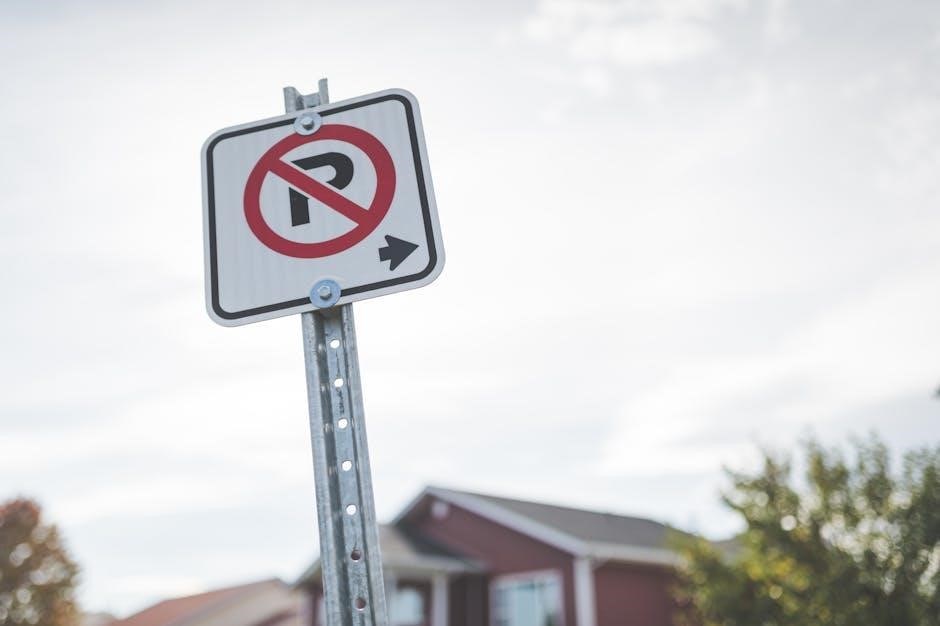
Penalties and Disciplinary Actions
Basketball penalties include technical fouls for unsportsmanlike conduct, with potential ejections for severe violations․ These actions ensure fair play and maintain game integrity according to official rules․
Unsportsmanlike Conduct and Technical Fouls
Unsportsmanlike conduct in basketball includes actions like taunting, excessive arguing, or physical altercations․ Technical fouls are penalties for such behavior, resulting in free throws for the opposing team․ Repeat offenses can lead to ejections or suspensions․ Referees enforce these rules to maintain game integrity and player safety․ Understanding these penalties ensures fair play and sportsmanship, aligning with official basketball regulations outlined in the FIBA rulebook and NBA guidelines․ Proper enforcement of these rules promotes respect among players, coaches, and officials, fostering a positive environment for competition․
Ejections and Suspensions
Ejections occur when a player or coach commits severe misconduct, such as flagrant fouls, verbal abuse, or physical altercations․ Suspensions are post-game penalties for repeated or egregious violations․ In FIBA and NBA, ejections result in immediate removal from the game, while suspensions may include missing future games․ The severity of the punishment depends on the offense, with governing bodies reviewing incidents to determine appropriate consequences․ Appeals processes are available, but decisions are typically final․ These measures ensure accountability and uphold the integrity of basketball, maintaining a safe and respectful environment for all participants, as outlined in the official FIBA and NBA rulebooks․
Protests and Appeals
Protests and appeals are formal processes for disputing decisions made during a basketball game․ According to FIBA and NBA regulations, protests must be filed within a specified timeframe, typically 24 hours, and require detailed documentation․ Teams or players can appeal certain rulings, such as fouls or technical errors, to the governing body․ A committee reviews the evidence and renders a final decision․ The process ensures fairness and accountability, allowing for the correction of potential injustices․ However, appeals are rarely overturned, emphasizing the importance of referees’ on-court judgments․ This system promotes respect for the rules and maintains the integrity of the game at all levels․
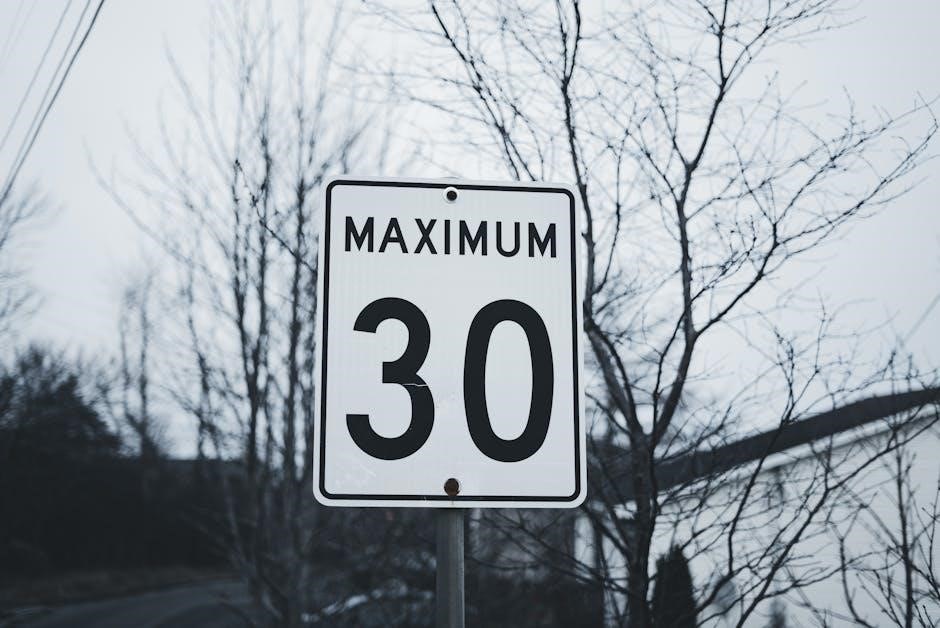
Special Situations
Overtime rules and jump ball procedures are critical in resolving tied games․ Alternating possession ensures fairness, while instant replay helps officials make accurate decisions in key moments, ensuring game integrity․
Overtime Rules
In basketball, overtime is used to break a tie score at the end of regulation play․ According to FIBA rules, overtime periods last 5 minutes, and the game continues until one team is ahead․ The shot clock resets to 24 seconds in each overtime period․ If the score remains tied after the first overtime, additional 5-minute periods are played․ The first team to score and lead after any overtime period wins the game․ Overtime rules ensure a decisive outcome while maintaining fair competition․ These procedures are clearly outlined in the official basketball rulebook to guide referees and players in high-pressure situations․
Jump Ball and Alternating Possession
A jump ball is a method used to start the game or resume play after a tied possession․ According to FIBA rules, two players from opposing teams jump up, and the ball is tossed between them by the referee․ The team that gains control begins play․ Alternating possession is used in overtime to ensure fairness, with teams taking turns earning the first possession of each extra period․ This rule minimizes disputes and ensures equal opportunities for both teams to score․ These procedures are clearly outlined in the official basketball rulebook to maintain fair play and balance during critical moments of the game․
Instant Replay and Challenges
Instant replay is a crucial tool in modern basketball, used to review critical plays and ensure accurate decisions․ According to FIBA rules, referees can utilize replay systems to assess fouls, out-of-bounds calls, and shot clock violations․ In the NBA, coaches are allowed a limited number of challenges per game to dispute calls, with the possibility of earning an additional challenge if successful․ The official basketball rulebook details the specific scenarios where replay can be applied, such as buzzer-beating shots or potential goaltending incidents․ This technology enhances fairness and transparency, while challenges provide teams with a voice in contested decisions, balancing tradition with modern innovation in the sport․
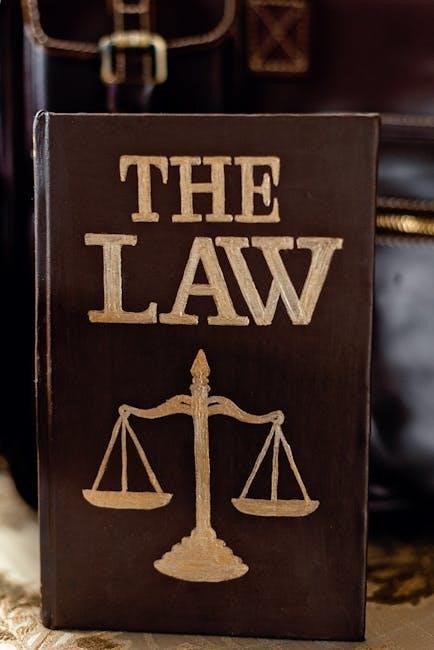
Resources for Further Learning
FIBA and NBA rulebooks provide detailed guidelines for players and officials․ The Official Basketball Rules PDF is available online, offering comprehensive insights into the sport’s regulations․ Online courses and training materials further enhance understanding of the game’s rules and nuances, ensuring continuous learning for enthusiasts and professionals alike․
Official FIBA Basketball Rulebook PDF
The Official FIBA Basketball Rulebook PDF is a comprehensive guide detailing the rules and regulations of basketball internationally․ It is freely available online and provides detailed insights into game structure, fouls, and equipment standards․ The document outlines key aspects such as team composition, scoring systems, and game timing, ensuring clarity for players, referees, and coaches․ Updated annually, it reflects the latest rule changes and interpretations․ This resource is essential for understanding the global standards of basketball and is widely used by leagues and tournaments worldwide․ It serves as the primary reference for officiating and gameplay, promoting consistency and fairness in the sport․
NBA Rulebook and Differences
The NBA Rulebook provides detailed guidelines for professional basketball in the United States, differing slightly from FIBA rules․ Key differences include longer game lengths (four 12-minute quarters) and a 24-second shot clock․ The NBA allows six fouls per player before fouling out, while FIBA permits five․ Rules like basket interference and goaltending also vary․ The NBA Rulebook is available online and outlines specific regulations for player conduct, equipment, and gameplay․ It is essential for understanding the nuances of professional basketball in the U․S․ and how it contrasts with international play․ The document is regularly updated to reflect rule changes and interpretations, ensuring clarity for players, officials, and fans․
Online Courses and Training Materials

Various online platforms offer comprehensive courses and training materials to learn basketball rules and regulations․ FIBA and NBA official websites provide detailed rulebooks, videos, and guides for understanding the game․ Websites like Coursera and Udemy feature courses on basketball officiating and coaching, covering rule interpretations and practical applications․ Additionally, YouTube channels and sports education portals offer tutorials and webinars․ These resources cater to players, coaches, and referees, ensuring a deeper understanding of the game’s intricacies; They are updated regularly to reflect rule changes, making them invaluable for continuous learning and professional development in basketball․
Adhering to basketball rules ensures fair play and enjoyment․ Continuous learning and adaptation to rule updates are essential for players, coaches, and referees to excel in the sport․
Basketball is played by two teams of five players each, aiming to score by shooting the ball into the opponent’s hoop․ The game is divided into four quarters, each lasting a specified time, with a shot clock ensuring offensive play․ Teams must adhere to rules like no traveling or double dribbling․ Fouls, such as illegal contact, result in free throws or possession changes․ Equipment must meet FIBA or NBA standards, ensuring safety and fairness․ Understanding these regulations is crucial for players, referees, and fans to appreciate the game fully and maintain its integrity across all levels of competition․
Importance of Adhering to the Rules
Adhering to basketball rules ensures fair play, safety, and competitive balance․ Rules maintain the integrity of the game, allowing players to compete without unfair advantages․ They also protect participants from injuries by enforcing boundaries on physical contact․ Respect for rules fosters discipline and sportsmanship, essential for building trust among players, referees, and fans․ Clear guidelines help everyone understand their roles, reducing conflicts and misunderstandings․ By following regulations, basketball remains a structured and enjoyable sport for all involved, promoting teamwork and skill development while preserving its global appeal and traditions․
Continuous Learning and Adaptation
Continuous learning and adaptation are crucial for mastering basketball rules and regulations․ As the sport evolves, rule updates are introduced to enhance gameplay and safety․ Players, coaches, and officials must stay informed about changes in FIBA and NBA guidelines to maintain competitiveness and fairness․ Regularly reviewing the Official Basketball Rules PDF ensures understanding of new regulations․ Adaptation to rule changes fosters improved performance and compliance․ By embracing lifelong learning, the basketball community upholds the integrity and dynamic nature of the game, ensuring it remains engaging for generations to come․ Staying updated is essential for success in this fast-paced sport․
